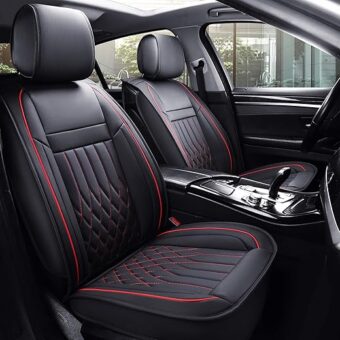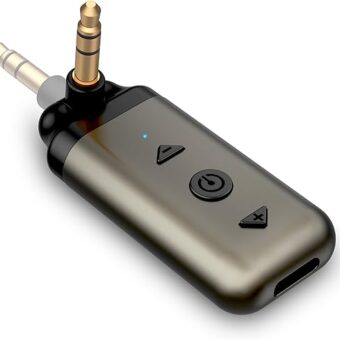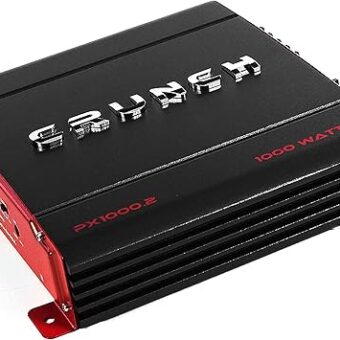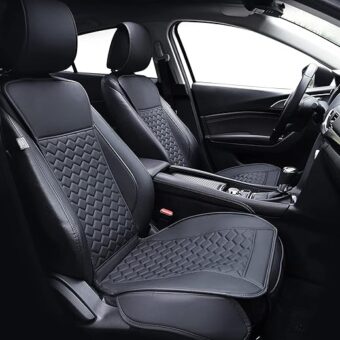This step-by-step guide outlines the process of removing a dash cam from your car while ensuring no damage occurs to the vehicle. It emphasizes careful handling and provides detailed instructions on disconnecting power sources, detaching mounting brackets, and cleaning any residue left behind. By following these steps, you can safely remove your dash cam without harming your car’s interior or electronics, allowing for a smooth transition whether you’re relocating the device or choosing not to use it anymore.
Gather Necessary Tools
Gather all necessary tools before starting your project. This preparation will streamline your process and safeguard your equipment from damage. Here’s a list of tools you need:
- Flathead screwdriver: Essential for removing or adjusting screws.
- Trim removal tool: Helps you gently pry off trim without causing scratches or dents.
- Microfiber cloth: Perfect for cleaning surfaces and preventing scratches on delicate components.
Organize your workspace by placing all tools within easy reach. Check to ensure each tool is in good condition and ready for use. This step will enhance your efficiency and keep your focus where it matters most.
Turn Off the Dash Cam
Ensure that your dash cam is completely powered off before starting the removal process. Press the power button firmly to turn it off and wait for the device to confirm it has shut down. Once you confirm it’s off, unplug the dash cam from the power source, which is usually a car charger or direct wiring to the vehicle’s electrical system.
Check that the dash cam is no longer receiving power by observing any indicator lights; they should be off. This step is crucial to avoid any electrical issues, such as short circuits or damage to your vehicle’s electrical system, while you remove the device. Remember to handle the wires gently to prevent any potential fraying or disconnection.
Remove the Power Cable
Disconnect the power cable from the dash cam by grasping the connector firmly and pulling it straight out. Avoid twisting or yanking, as this can damage the port. If the cable is secured with adhesive tape, gently peel back the tape using your fingernail or a plastic trim removal tool. Be patient and work slowly to prevent tearing the cable or damaging the dash cam.
Pry loose any clips that may be holding the cable in place. Insert the tip of your trim removal tool under the edge of the clip, and carefully lift it upward to release the cable. Continue to work your way along the length of the cable, ensuring it is completely free before removing it from the dash cam. This careful disconnection will help maintain the integrity of both your dash cam and the power cable.
Detaching the Dash Cam from the Mount
Carefully pull the tab on the suction cup mount to release the vacuum seal. Ensure you are steady and gentle while doing this to avoid any sudden movements that could damage your dash cam or your windshield. Once the suction is detached, hold the camera securely so it doesn’t drop.
Use the trim tool if your dash cam is fixed with an adhesive mount. Slide the tool between the edge of the camera and the surface it’s attached to. Apply gentle pressure to loosen the adhesive without scratching or damaging your windshield or dashboard. Work your way around the edges progressively, keeping the tool flat against the surface to minimize any impact.
Clean the Area
Wipe the area where the dash cam was mounted using a microfiber cloth. This will help eliminate any leftover residue from the adhesive or suction mount. Make sure to apply gentle pressure while cleaning to avoid scratching your vehicle’s surface. If residue persists, dampen the cloth slightly with warm water or a mild cleaning solution, then continue wiping until the area is completely clean.
Inspect the surface closely to ensure no remnants remain. If you notice stubborn spots, gently scrub the area with the microfiber cloth until it is spotless. Allow the surface to dry completely before considering any new installations or applying protective products. Taking these steps will help maintain your vehicle’s interior and prepare it for its next accessory.
Check for Remaining Cables
Inspect the area for any remaining cables or connectors. Carefully look around the engine bay, under the dashboard, and beneath the vehicle. Pay special attention to any wiring harnesses, battery connections, or grounds that may have been overlooked. Sometimes, cables can hide behind other components or become tangled, so take your time to ensure every area is thoroughly checked.
Remove any cables that are still attached to the vehicle. For example, if you’ve recently changed the battery, confirm that no battery cables are left connected. Look for any wires connected to sensors, lights, or the ignition system. If you spot connectors, gently disconnect them while ensuring not to damage their clips or locking mechanisms. Keep a checklist of the cables you’ve inspected and removed, so you can track your progress and prevent leaving anything behind.
Store the Dash Cam Safely
Keep your dash cam safe by storing it in a designated area. Choose a cool, dry location, such as a drawer or a storage box. Avoid areas where moisture or extreme temperatures might damage your device.
Organize all accompanying cables and accessories. Bundle the power cable, mount, and any additional components together using a rubber band or small bag. Label the bag if necessary for quick identification. For example, if you have an extra memory card, place it along with the dash cam to ensure you have everything in one place when it’s time to reinstall.
Make a note of this storage location somewhere you can easily access it later, such as the notes app on your phone or a labeled folder in your documents. This simplicity will save you time and effort when you want to use the dash cam again.
Safe Dash Cam Removal Tips
In conclusion, removing your dash cam doesn’t have to be a daunting task. By preparing with the right tools and following a careful, step-by-step process, you can ensure a damage-free experience. Don’t forget to tidy up afterward for a polished finish! With these tips, you can confidently remove your dash cam while keeping your car’s interior in pristine condition. Happy driving!
Necessary Equipment List
Safe Removal Techniques
Step-by-Step Guide to Successfully Installing Your Dash Cam
- Choose the Right Location: Decide where you want to mount your dash cam. The ideal position is behind the rearview mirror to maximize your field of view without obstructing your line of sight
- Clean the Surface: Clean the area where you’ll be mounting the dash cam with rubbing alcohol or a glass cleaner. This ensures a secure adhesion for the sticky mount
- Attach the Mount: Use the provided adhesive mount to securely attach the dash cam to your chosen location. Press firmly for about 30 seconds to ensure it sticks well
- Route the Power Cable: Connect the power cable from the dash cam to your car’s power outlet. Tuck the cable along the edges of the windshield and under trim panels to keep it neat and out of sight
- Adjust and Test: Adjust the dash cam angle to get the best view of the road ahead, then turn it on and do a quick test to ensure it’s recording properly. Make any final adjustments if necessary
- Feel free to ask if you have any questions along the way!
Step-by-Step Guide to Dash Cam Installation
If your dash cam isn’t turning on after installation, here are some steps you can take to troubleshoot the issue:
- Check the Power Source: Ensure that the dash cam is properly connected to a power source. If it’s hardwired, check the connections; if it uses a cigarette lighter, ensure the adapter is secure.
- Inspect the Fuse: If your dash cam is hardwired, check the fuse in the power circuit. A blown fuse could prevent the dash cam from receiving power.
- Examine the Wiring: Look for any visible damage in the wiring or connectors that could cause a loss of power. If you find any issues, you may need to fix or replace those components.
- Ensure Proper Installation: Double-check the installation instructions. Sometimes, a small error during installation can lead to issues. Make sure everything is connected according to the manufacturer’s guidelines.
- Test the Cam in Another Car: If possible, try connecting the dash cam in another vehicle. This can help you determine if the issue is with the dash cam itself or the vehicle’s power supply.
- Change the Fuse in the Adapter: If your dash cam uses a car charger, check if it has a fuse in the adapter. If it’s blown, replace it.
- Reset the Dash Cam: Some dash cams come with a reset button. Press it to see if it resolves the issue.
- Consult the Manual: Refer to the user manual for troubleshooting tips specific to your model. Every dash cam can have unique requirements or indicators.
- Contact Customer Support: If none of the above steps work, consider reaching out to the manufacturer’s customer support for assistance. They might provide more advanced troubleshooting or identify if the unit is defective.
By following these steps, you’ll be able to pinpoint the issue and get your dash cam up and running again!



![Ailun Glass Screen Protector for iPhone 14 / iPhone 13 / iPhone 13 Pro [6.1 Inch] Display 3 Pack Tempered Glass, Case Friendly](https://driveinstylepro.com/wp-content/uploads/2024/08/ailun-glass-screen-protector-for-iphone-14-iphone-13-iphone-13-pro-61-340x340.jpg)











While we’re on the topic, I just installed a Vantrue N4 dash cam in my car last week. I found that running the power cable under the trim was a game-changer for a clean look! Has anyone else tried this method?
Thanks for sharing! The Vantrue N4 is a solid choice! Running the cable under the trim not only keeps it tidy but also prevents it from getting snagged. Just make sure to use a trim removal tool to avoid damaging anything while you’re at it!
What about tips for safely reinstalling the dash cam after removal? Any advice on avoiding scratches or marks on the windshield?
Great question! When reinstalling, make sure to clean the area with a glass cleaner first. Using a microfiber cloth can help prevent scratches. Also, consider using adhesive pads instead of suction cups for a more permanent solution!
I’ve removed a couple of dash cams before, and I usually just cut the power cable instead of disconnecting it. Just make sure you’re ready to replace that cable later! Anyone else tried this?
Cutting the cable can save time, but be cautious! It’s definitely a quicker method, but it might void warranties or lead to future issues if you want to reinstall. Always good to weigh your options!
Hey, can anyone recommend a good suction cup mount for the next dash cam? I’ve seen some that claim they’re super strong but end up falling off during driving! Any tips?